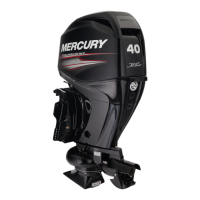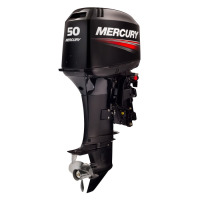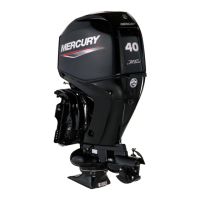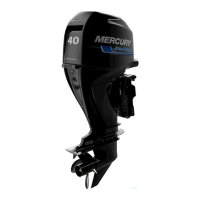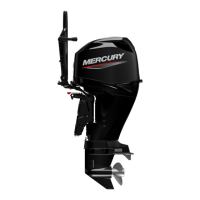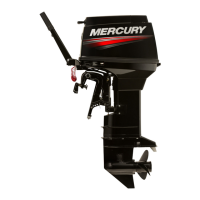GENERAL INFORMATION
Page 1C-18 90-857046R1 NOVEMBER 2001
Compression Check
CAUTION
Compression/Cylinder Leakage Tests Must be performed with the ignition/injection
system disabled. To do this, the lanyard stop switch MUST BE placed to the “OFF”
position.
IMPORTANT: Compression check should be done with throttle in WOT position.
1. Check valve clearance (refer to “Valve Clearance Adjustment” in section 4A), adjust
if out of specification.
2. Warm up the engine. Remove all spark plugs.
3. Lubricate threads in cylinder head and on compression gauge. Install compression
gauge in spark plug hole.
110
4-Stroke Outboard Oil
110
a
EEPV303A / MT26-18P/N
b
a-Compression Gauge (EEPV303A - Snap-on)
b-Adaptor (MT26-18 - Snap-on)
4. Hold throttle plate at W.O.T. and crank the engine over until the compression reading
peaks on the gauge. Record the reading.
5. Check and record compression of each cylinder. The highest and lowest reading
recorded should not differ by more than 15% (see example chart below). A reading
below 120 psi might indicate a total engine wear problem.
Compression Pressure (Minimum)
135 psi (950 Kpa, 9.5 kg/cm
2
)
Example of compression test differences:
Maximum (psi) Minimum (psi)
180 162
150 127.5
6. Remove compression gauge. Install spark plugs.
NOTE: Compression check is important because an engine with low or uneven compres-
sion cannot be tuned successfully to give peak performance. It is essential, therefore, that
improper compression be corrected before proceeding with an engine tuneup.

